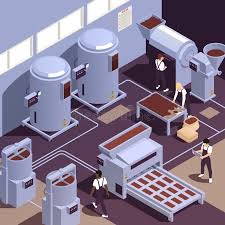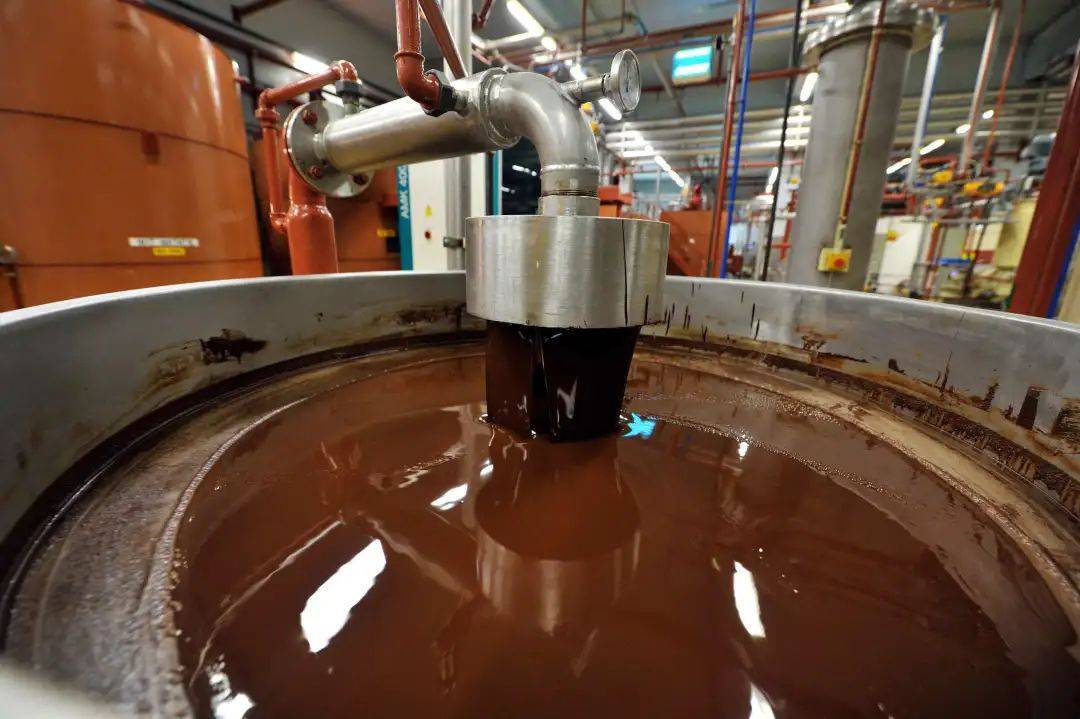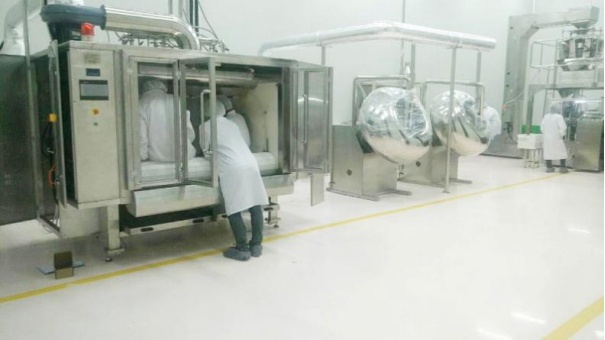A Confectioner’s Guide to Chocolate Moulding Machines
The art of chocolate making has been perfected over centuries, but in today’s competitive market, efficiency and consistency are key. While the perfect recipe is the heart of a great chocolate product, the right equipment is the backbone of a successful operation. Chocolate moulding machines, in particular, are central to any modern chocolate production line, transforming liquid chocolate into a variety of shapes and sizes with precision and speed.
This guide will walk you through the different types of chocolate moulding machines and provide essential tips to help you choose the best equipment for your needs.
Types of Chocolate Moulding Machines
Choosing the right machine starts with understanding the different technologies available, as each is suited for specific production scales and types of products.
1. Drip-Pouring Moulding Machines
This is a simpler, entry-level type of moulding machine. Liquid chocolate is dripped or poured into moulds, which are then manually or semi-automatically moved through the process.
- Best for: Small-scale production, artisan chocolatiers, and small businesses with limited space.
- Pros: Lower cost, simple to operate and maintain.
- Cons: Lower output, less precision, and not suitable for complex or hollow shapes.
2. Injection Moulding Machines
Commonly known as chocolate moulders or chocolate moulding machines, these are the workhorses of medium to large-scale production. They inject a precise amount of tempered chocolate into moulds, ensuring consistent weight and shape. The moulds then pass through cooling tunnels and demoulding stations.
- Best for: Medium to large factories, producing solid chocolate bars, figures, and pralines.
- Pros: High precision, excellent consistency, and high output.
- Cons: Higher initial investment and more complex to operate.
3. Vibrating Moulding Machines
Vibrating tables are essential in the moulding process, but some machines are built around this principle. They use vibration to settle the chocolate, remove air bubbles, and ensure it fills every part of the mould evenly.
- Best for: Producing solid products like bars and blocks with a smooth, glossy finish, and is often a component of a larger automated line.
- Pros: Ensures a high-quality finish, eliminates bubbles, and can be integrated into existing lines.
- Cons: Requires manual handling in many cases, and is not a complete solution on its own.
4. Automated Chocolate Machines
A fully automated line is the pinnacle of chocolate production. These machines handle every step of the process—from tempering and depositing to vibration, cooling, and demoulding—with minimal human intervention. They represent the most advanced form of chocolate moulding equipment and are the key to high-volume output.
- Best for: Large-scale industrial production, multi-product factories, and companies focused on efficiency.
- Pros: Maximum efficiency, minimal labor costs, superior consistency, and high throughput.
- Cons: Significant initial investment and requires skilled technicians for maintenance.
5. Small-Scale / Laboratory Moulding Machines
These compact machines are designed for R&D, product testing, and very small-batch production. They offer the functionalities of larger machines on a micro scale.
- Best for: Laboratories, culinary schools, and small artisan shops.
- Pros: Space-saving, low cost, ideal for experimentation.
- Cons: Very low output and not suitable for commercial-scale production.
Your Guide to Selecting a Chocolate Moulding Machine
Choosing the right machine is a strategic decision that will impact your business’s future growth and profitability.
1. Define Your Production Needs
Before you start looking at machines, clearly define your goals. What products do you want to make (solid bars, hollow figures, pralines)? What is your target production volume per hour? Do you need a stand-alone machine or a complete chocolate production line?
2. Evaluate Technical Specifications
Pay close attention to the technical details. Consider the following:
- Mould Capacity: How many moulds can the machine handle per cycle or per minute?
- Temperature Control: Does the machine have precise and stable temperature control, which is critical for proper tempering?
- Automation and PLC System: Is the machine operated by a user-friendly PLC (Programmable Logic Controller) with a touch screen interface?
- Material Quality: Is the machine made from food-grade stainless steel to ensure hygiene and durability?
3. Brand Reputation and After-Sales Service
A machine is only as good as the company that stands behind it. Look for a manufacturer with a proven track record, positive customer reviews, and reliable technical support. Good after-sales service, including installation, training, and long-term maintenance, is crucial for minimizing downtime.
4. Cost and ROI
While the initial cost is a factor, focus on the total cost of ownership and return on investment (ROI). A more expensive, durable, and efficient machine may save you money in the long run through higher output and lower maintenance costs.
Why LST Chocolate Equipment Is a Top Choice
For over a decade, LST has been a leading manufacturer of chocolate equipment and a trusted partner for confectioners worldwide. Their commitment to quality, innovation, and customer support has made them a go-to choice for companies of all sizes.
- Professional Product Line: LST offers a comprehensive range of equipment, from chocolate melting tanks and tempering machines to fully automated chocolate moulding machines. Whether you need a small-scale laboratory unit or a high-capacity, automated chocolate production line, LST has a solution that fits your needs.
- Technical Expertise & Customer Service: The LST team provides expert technical support, including professional installation guidance and operational training. Their focus on long-term partnerships means you can count on them for reliable after-sales service and maintenance, ensuring your equipment runs smoothly for years.
- Global Reliability: LST’s chocolate moulding machines and other equipment have been successfully exported to numerous countries across Europe, Asia, and North America. This global footprint is a testament to the reliability and quality of their products.
- Customization and Flexibility: LST understands that every business is unique. They offer tailored solutions, allowing for adjustments in mould specifications and machine functionality to meet your specific production requirements.
Conclusion
Choosing a chocolate moulder is a significant decision for any confectioner. By understanding the different machine types and evaluating your needs based on key factors like production scale, technical specifications, and after-sales support, you can make an informed choice that will drive your business forward.
When investing in a chocolate moulder or a complete chocolate production line, selecting a professional and reliable partner is paramount. With a strong focus on quality, innovation, and comprehensive customer support, LST has proven to be a trusted provider of high-quality LST chocolate equipment.
Contact LST today to discuss your production needs and get a custom solution that fits your business.


